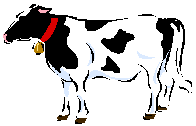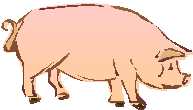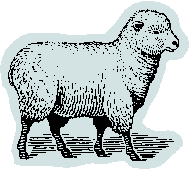

No, this blog has definitely not been posted to the wrong site! After all, both blueberry bushes and cows are fixed assets and the connection to each other is that they have both recently been mentioned in Congress during the talks on renewing and possibly expanding the deduction for bonus depreciation.
Here’s how this month’s topic came about: In last month’s blog, I discussed bonus depreciation expiring at the end of 2013, and that there has been talk about whether it will be extended, expanded, and, some hope, even be made permanent. So I was looking around to see what has been in the news recently about fixed assets management, when I noticed some interesting legislation (H.R.4718) concerning bonus depreciation being considered by Congress.
This latest legislation’s importance (at least to the blueberry bushes) is that when the House Ways and Means Committee issued it, recommending making bonus depreciation a permanent deduction, they included a provision that would expand it to include trees and vines bearing fruit and nuts. Apparently, no one was thinking about blueberries at the time. And, why you ask, should this be at all newsworthy? The reason is simple: the chairman of this illustrious committee is David Camp (R-Michigan) and that is what makes the oversight so surprising. Blueberries, in case you are not agriculturally-inclined, grow on BUSHES….. not on trees or even on vines. Furthermore, it might be helpful to point out that Michigan leads all other states in the production of blueberries! You would think Congressman Camp would have paid closer attention to the interests of his constituency. Although fruit-bearing bushes could be added to the bill at a later date, the issue may be pointless since the White House has already threatened to veto the bill unless it contains budget offsets. Making bonus depreciation a permanent provision would be quite costly.
This might be good time to point out that the depreciation rules, in general, are not especially kind to farmers. The rules for farm property are often both more restrictive and more complicated. Consider for instance the restriction that most farm property may not be depreciated using the double-declining balance method. The maximum rate when using the declining-balance method of depreciation is 1.5 and sometimes the straight-line method must be used instead (such as for fruit- or nut-bearing trees and vines).
Next, consider some of the complexities when depreciating farm property. For example, while the age of your depreciable furniture or equipment is not relevant, age is important when it comes to livestock. Let’s use horses as an example. The recovery period for depreciating a horse depends on its use and its age. In 2014, race horses more than 2-years old and non-race horses more than 12-years old are three-year MACRS property while race horses two-years old or younger and non-race horses that are 12-years old or younger are seven-year property. Depreciating farm property is far from easy!
So, I’ve left the discussion of blueberries (but not the topic of bonus depreciation) and now that I’m talking livestock, I’m a lot closer to how the cows came into my blog.
Bonus depreciation is only allowed on new property, that is, property whose original use begins with the taxpayer. Naturally, one might wonder how cows are affected by bonus depreciation. The problem is when dairy cows that are being milked are later sold to another farmer. Such cows are considered “used” and thus do not qualify for bonus depreciation. Senator Charles Schumer (D-NY) last year introduced legislation that would have expanded the bonus depreciation provision to allow such cows to qualify for the deduction. He hoped a more generous tax provision might aid in the expansion of the New York dairy industry. However, to date, the bill has not passed.


Fascinating Fixed Assets Fact: Depreciation on livestock does not start until an animal reaches maturity. Furthermore, livestock that is raised on a farm does not have a depreciable basis.


